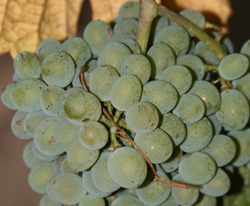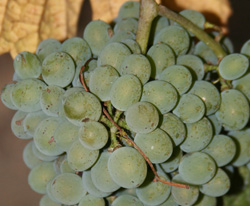Spanish Wines — A Seductive New Crop
Gerry Dawes is a famous character in the Spanish food and wine scene, both on these shores and in Spain itself. A veteran of the wholesale wine business, he has been traveling around Spain for decades, discovering its best things to eat and drink, and promoting them — the wines above all — in the United States, through personal appearances, interlocking websites (click here for the main one www.gerrydawesspain.com), and guided tours. He is a prolific writer and pretty much nonstop photographer (his images of Ferran Adrià, Mario Batali, and other important chefs have appeared on The Daily Meal). He is highly opinionated — some would say cantankerous — and extremely knowledgeable. His passion for things Spanish (he knows the country's literature and history and its flamenco almost as well as he knows its gastronomy) is so strong as to seem proprietary; somebody once called him, not without a hint of sarcasm, "the man who invented Spain."
Well, call him what you will, but Dawes has recently gotten back into the wine business, as an importer of small lots made by small producers, mostly in northwestern Spain, and his initial offerings include some bottlings that are nothing less than a revelation.
Dawes is forthright about what he doesn't like in wine: He is an outspoken foe of high alcohol, too much oak, insufficient acidity, the over-extracted "fruit bomb" style, and maybe most of all the anonymous could-be-from-anywhere character that all too many winemakers in every corner of the world seem to be striving for these days. In other words, he hates international-style stuff based on big-name French varietals, usually grown in areas where they have no business being, and vinified in a style that makes one indistinguishable from the next. When he opens a bottle, he's looking for something with balance, flavor, and above all individuality — the expression of terruño, or terroir, through indigenous grapes and native yeasts and winemaking practices that may be up-to-date but that allow the region's personality to shine through. Oh, and he doesn't have much patience with excessive pricing, either, and all but one of the 30-plus selections in his portfolio (he is adding more) have a suggested retail price of less than $30 a bottle, and some are less than $20. (Even the exception, Viña Cazoga Don Diego Crianza from Ribera Sacra, an exotic, chocolate- and tobacco-flavored wine with some of the "wild" character the French call animal, retails for only $50.)
pictured left), another white grape found mostly in Galicia and capable of producing truly fine wines, especially in the Valdeorras region; mencia, never thought of as an important red grape until recent years but now yielding wines of some distinction in Galicia and its neighbor in Léon, bierzo; and garnacha, which is grenache, a red grape (though it actually comes in white and "gray" forms, too), that is widely grown in southern France and increasingly important in California and Australia, but is probably from Aragón originally.
There wasn't one of these wines that I wouldn't have sipped happily, but these were the 10 that particularly impressed me.
White:
Adegas D. Berna Godello 2010 ($25). If I were a producer of white burgundy, a wine like this, from Valdeorras in Galicia, would make me nervous. It's big, authoritative, lush, and full of fruit (peaches come to mind), but beautifully structured, with plenty of acidity and a trace of flint — just delicious.
Another splendid godello from Valdeorras, a little lighter than the D.Berna, but also a touch more elegant, again with an abundance of fruit but enough acidity to balance out the opulence. (Pictured left, Pepe Rodriguez, proprietor of O Barreiro. Courtesy of Gerry Dawes)
Lagar de Broullon Albariño 2010 ($24). An albariño to banish all memory of those banal examples of the wine that now flood U.S. wine shop shelves — bright and well-rounded, with juicy fruit and a long, complex finish.
(Pictured right) If I'd tasted this blind, I might have thought it was a particularly lean and stylish viognier. It has a wonderful, intense aroma and real complexity of flavor, with plenty of acidity and a beguiling finish that is part mineral, part floral. I don't think I've had a better albariño.
Bodegas Manuel Formigo Finca Teira Blanco 2011 ($20). This is a blend of grapes found mostly in northwestern Spain: treixadura (65 percent), godello (20 percent), and torrontés (15 percent; this is not, incidentally, the same grape that goes by this name in Argentina). It is wonderfully fragrant — think of honeysuckle and jasmine — but pleasantly sharp and well-defined on the palate.
Rosé:
Aliaga Lagrima de Garnacha Rosado 2011 ($14). An almost dusty-dry Navarra sangrado ("bleeding") rosé — meaning that it's made from free-run juice — with a light, luminous pink color and an intense strawberry fruit both on the nose and on the palate.
Red:
Bodegas Adrià Viña Barroca 2010 ($15). A dark, juicy, lively mencia from Bierzo. The wine is unoaked, which lets the intense fruit shine through very nicely.
Don Bernardino Tinto Joven Mencia 2011 ($17). A brash, forthright mencia from Ribeira Sacra, medium-rich and herbaceous, with a flavor reminiscent of blackberries and a faint tannic bitterness.
Another Ribeira Sacra mencia, surprisingly soft, with a generous bouquet, a blackberry-and-black-pepper tang on the palate, and a long, satisfying finish. (Pictured right, Jorge Carnero, proprietor of Viña Cazoga, courtesy of Gerry Dawes)
Terra Remota Camino Tinto 2009 ($29). Atypical of Dawes' offerings, this is a blend of French and Spanish varieties (equal quantities of garnacha and syrah, plus 20 percent cabernet sauvignon and 10 percent tempranillo), higher in alcohol than the other wines tasted here (at 14 percent), and definitely showing some French oak. I thought the nose was a little cabbagey at first, but that character dissipated, and on the palate the wine is earthy and full, with the garnacha fruit shining through.
Gerry Dawes's wines are not yet widely distributed around the U.S. Some of them are available at Stew Leonard's Wines in New York State and at Chambers Street Wines, Despaña Vino y Mas, and Nancy's Wines for Food in New York City, and will be sold through Stew Leonard's Wines in Connecticut as of August. They may also be mail-ordered, for delivery to states that allow direct shipping of wines, from AOC Fine Wines in New York State, and will be sold through LaTienda.com, also beginning in August. Several of them are being poured by the glass in New York at Blue Hill at Stone Barns and at Terroir Tribeca. For more information on these wines, see www.spanishartisanwinegroup.com.

